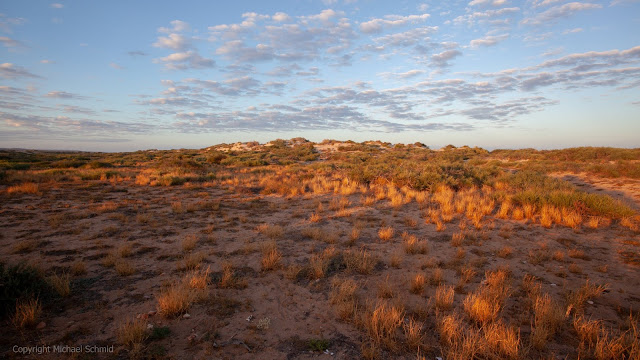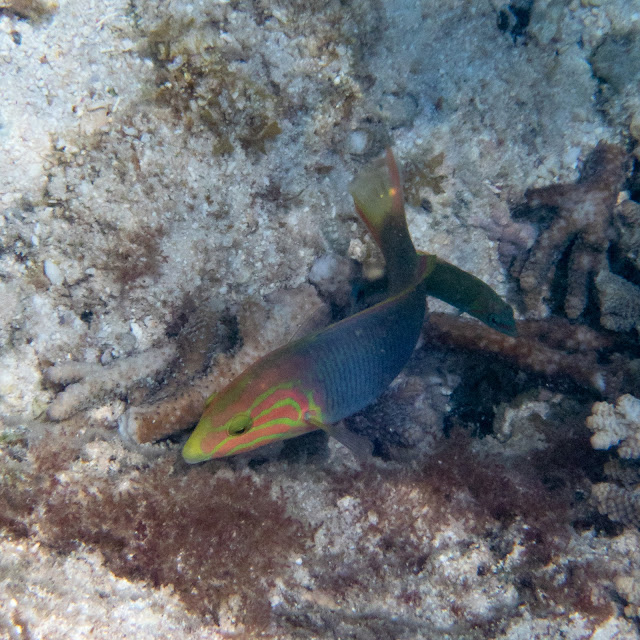1 – 6 October 2018
Driving north we stopped at
Minilya Roadhouse for coffee, then Lyndon River Rest Area for lunch. This was
the last rest area with toilets before Exmouth. There was also a number of
sheltered picnic tables. It looked like a popular spot for camping as well.
We were looking forward to 5 nights in the
National Park and were prepared for the windy conditions. I had organised meals
that either required short cooking times, or frozen meals that just needed to
be reheated.
Cape Range National Park is
within the Ningaloo Coast World Heritage Area and provides easy access to
Ningaloo Reef. Camping spots in the Cape Range National Park must be booked
online prior to arrival, and being school holidays, we had booked about three
weeks ahead. We considered ourselves fortunate to get 5 nights in what we hoped
would be a good spot. A park entrance fee is also payable with the campsite
booking. At $22 per night (for two people) and $13 park entrance fee (not per
day) we consider this to be great value.
After a late start, and more than 400km drive, we arrived at Kurrajong
campground and checked in with the volunteer camp hosts. We set up camp and
were pleasantly surprised that the wind wasn’t as bad as we had thought it
might be. We kept our fingers crossed that it would stay that way.
 |
| Kurrajong
campground. |
Milyering Visitor Centre - although we didn’t visit here until after we'd been in the park for a
couple of days, I would recommend making this your first stop. Lots of park
information, including maps is available, as well as merchandise and hire
equipment (snorkels, goggles and flippers).
Mangrove Bay Bird Hide Walk - Who doesn’t love a walk in the
mangroves? Of course the bird photographer had to visit this site. Access to
the beach was easy and the bird hide was well situated, and well maintained.
 |
| We watched hundreds of these little fiddler crabs signaling each other from near their sandy burrows. |
 |
| Black-footed rock-wallaby |
 |
| Black-footed rock-wallaby |
Yardie Gorge Trail - At the end of the nature trail, another
track takes you along the gorge trail. This is only another 750 metres return
but is a rough and rocky Grade 4. We started off along the track, and made it
through the first gully crossing easily. At that point we stopped for a while
so Mick could photograph the osprey which sat for some time on a rock nearby.
We continued on to the second gully crossing which was much more difficult. The
track is not very well marked in parts, but we found the third gully crossing
and stopped there. My fear of heights prevented me from going any further. The
track was rocky, loose, narrow, steep and too high for me.
 |
This Osprey was looking for fish in the creek below.
|
South Mandu – Another camper had recommended this as a good spot for
snorkelling so we were pleased to discover we were the only ones there – when
we arrived. After we exited the water a large group arrived and set up all
their gear about 5 metres away from us. They had the whole beach to choose
from!



















































No comments:
Post a Comment